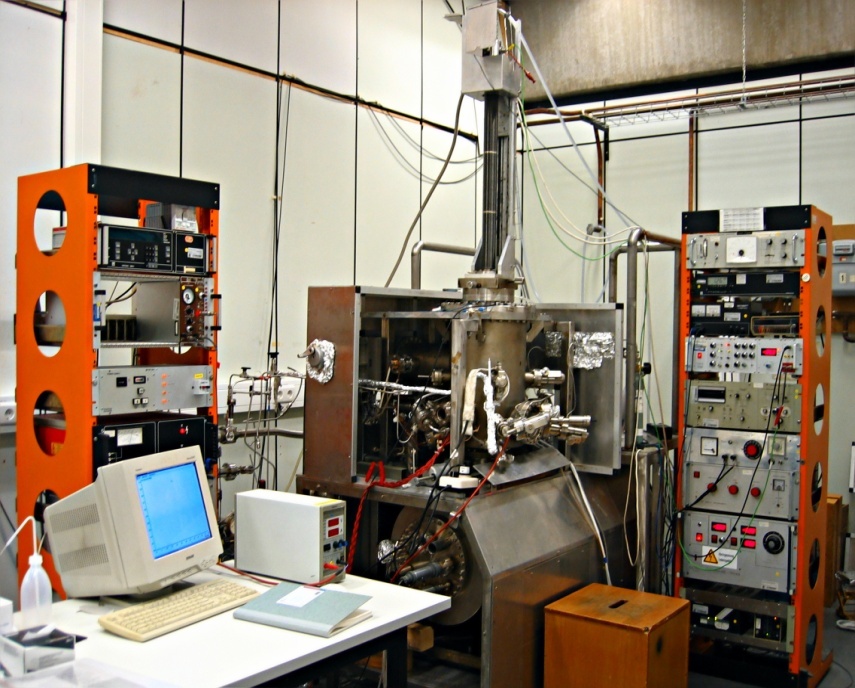High-resolution electron energy loss spectroscopy (HREELS)
High-resolution electron energy loss spectroscopy (HREELS) is one of the most advanced analytic methods in surface science. This method covers not only basically all relevant vibrational frequencies, but it is also sensitive to electronic excitations (plasmons, HOMO–LUMO excitations) and can thus provide a bulk of valuable information about vibrational, geometric and electronic properties of adsorbates on solid substrates (usually well-defined metal or metal oxide single-crystal surfaces). Our HREELS system contains two chambers. The upper chamber (also called preparation chamber) is equipped with a quadrupole mass spectrometer (Pfeiffer, Prisma) for thermal desorption spectroscopy (TDS) experiments, a metal evaporator for deposition of metal films, as well as facilities for low-energy electron diffraction (LEED) and surface cleaning by Ar+ ion sputtering. The lower chamber houses an HREELS spectrometer (Delta 0.5, SPECS, Germany) with a straight-through energy resolution of 1 meV (8 cm-1). The sample temperature can be changed from 90 K (cooled by liquid nitrogen) to 1000 K for metal oxide samples.


